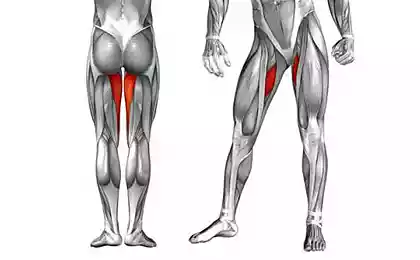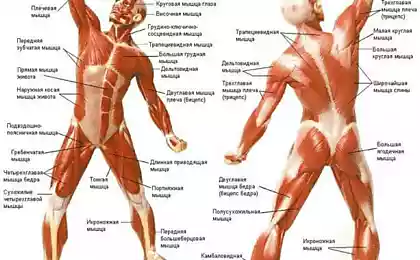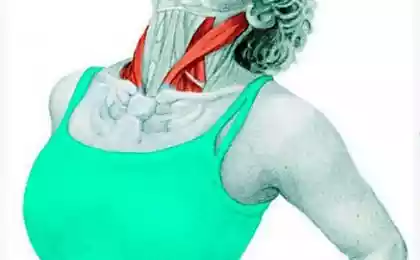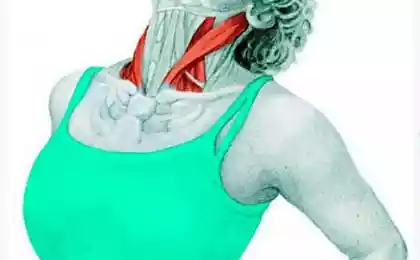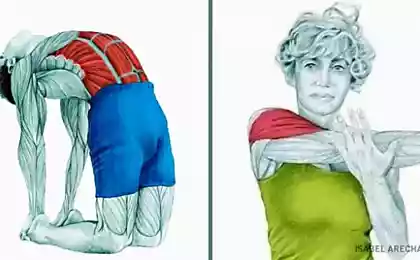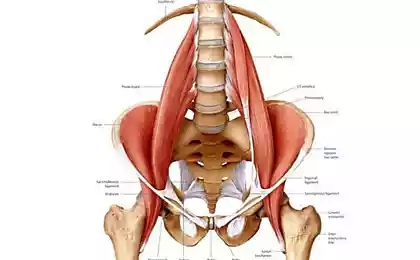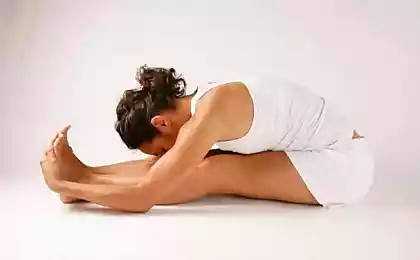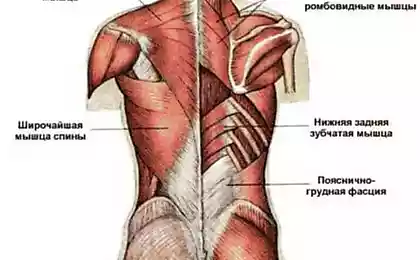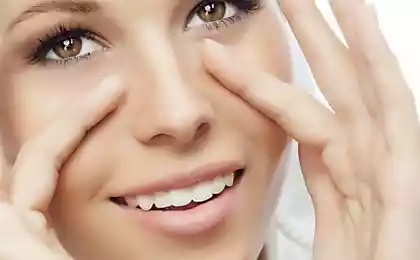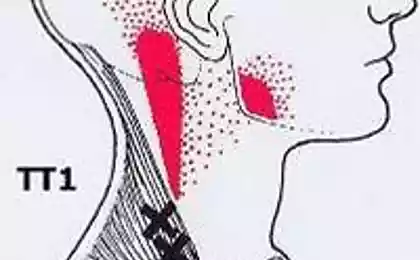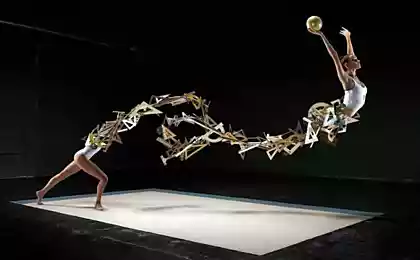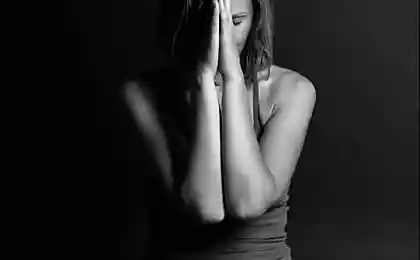435
A simple technique for relaxing connective tissues throughout the body
The human skull consists of 22 different bones that are connected to each other as we joined hands, interlocking fingers.
With age, these bones remain mobile, barely noticeable widening and tapering. One of the goals of this movement – providing the pumping and circulation of cerebrospinal fluid. It is vital that the bones of the skull could move in the inherent mode (6 to 12 cycles of expansion-contraction / min).
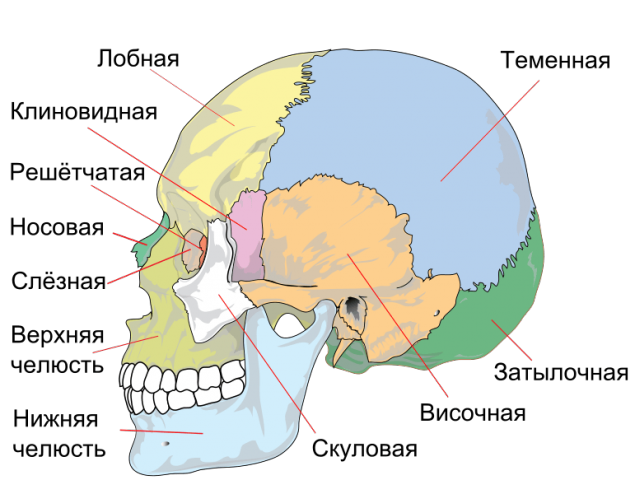
A good way to "force" the bones of the skull to move more actively is to lie on your back, placing the back two tennis balls and, thus, to create a so-called "dead point".
This method was first described by Dr. John Upledger in his book "craniosacral therapy".
Short stop motion of the skull bones (the dead point), acts like a "reset button" on the computer, starting the mechanisms of self-correction of the cranio-sacral system, which in turn can have a profound beneficial effect on the entire body. The use of this technique can promote relaxation of the connective tissue (muscles etc.) throughout the body and restoring the normal reaction of the nervous system to stress.
It is useful in acute and chronic damage to the musculoskeletal system, including degenerative arthritis. It can help you even lower a high temperature and to reduce congestion and edema in the lungs and brain. It is used to treat autoimmune diseases, childhood autism, anxiety, changes in musculoskeletal system, osteochondrosis.
This method in varying degrees, useful to most people and rarely causes contraindications (acute phase of stroke, head injury).
Tennis balls can be put under any areas of the spine from top to bottom, massaging reflex points for easing pain. Even holding one tennis ball between the wall and the site of muscle "clip" and rolling it back and forth, you can effectively to massage and soften hardened muscle when experiencing low back pain, sciatica.
TECHNIQUE
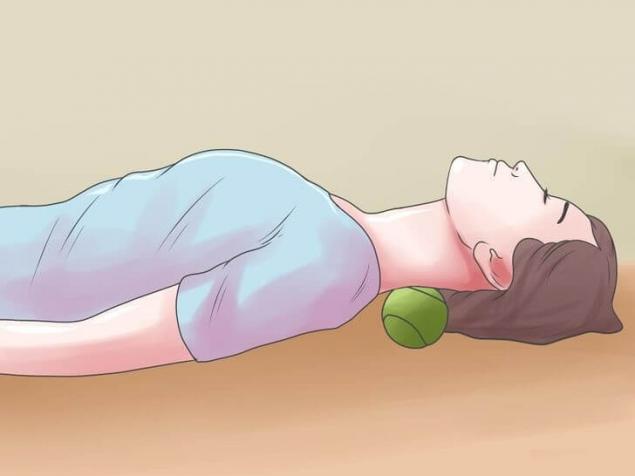
Take 2 tennis balls and place them together so that they touch each other. It's easy to do if you shove them in a sock and the sock to tie a knot to secure them in this position.
Lie on your back on floor, hard bed or the couch and put the balls under your head so that they had the entire weight of your head.
The balls should be approximately 1/3 of the way up from the base of the head (just above the level of the outer ear canal), not the binding or the neck muscles.
Let your head rest on the balls for 10-15 minutes. Relax and feel comfortable.
You can slightly change the position of the body to maintain symmetry and comfort, but to do it carefully and gradually.
Repeat the procedure daily before bedtime.published
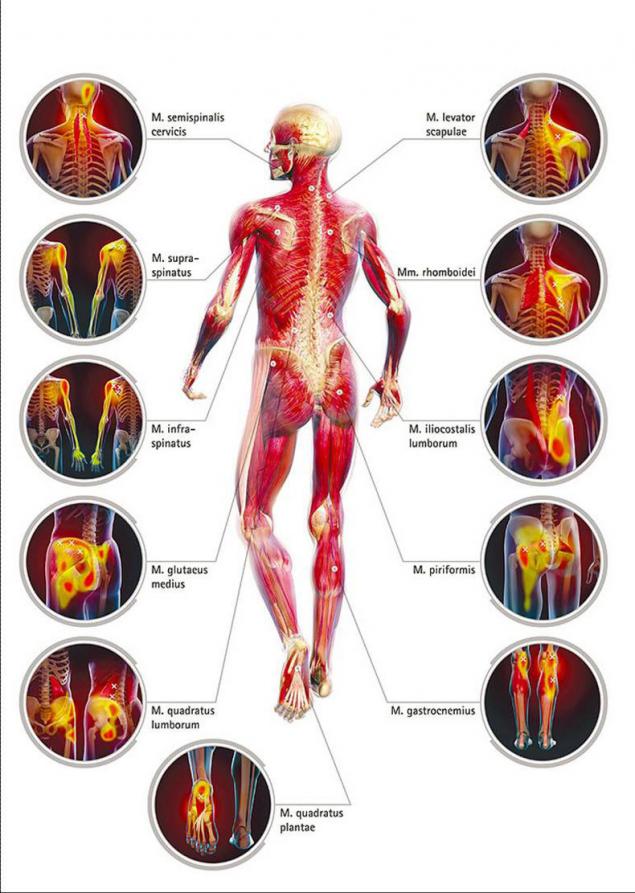
The materials are for informational purposes. Remember, self-life-threatening, for advice regarding the use of any medicines and methods of treatment, contact your doctor.
P. S. And remember, only by changing their consumption — together we change the world! ©
Source: vk.com/wall-23903469?w=wall-23903469_6300
With age, these bones remain mobile, barely noticeable widening and tapering. One of the goals of this movement – providing the pumping and circulation of cerebrospinal fluid. It is vital that the bones of the skull could move in the inherent mode (6 to 12 cycles of expansion-contraction / min).

A good way to "force" the bones of the skull to move more actively is to lie on your back, placing the back two tennis balls and, thus, to create a so-called "dead point".
This method was first described by Dr. John Upledger in his book "craniosacral therapy".
Short stop motion of the skull bones (the dead point), acts like a "reset button" on the computer, starting the mechanisms of self-correction of the cranio-sacral system, which in turn can have a profound beneficial effect on the entire body. The use of this technique can promote relaxation of the connective tissue (muscles etc.) throughout the body and restoring the normal reaction of the nervous system to stress.
It is useful in acute and chronic damage to the musculoskeletal system, including degenerative arthritis. It can help you even lower a high temperature and to reduce congestion and edema in the lungs and brain. It is used to treat autoimmune diseases, childhood autism, anxiety, changes in musculoskeletal system, osteochondrosis.
This method in varying degrees, useful to most people and rarely causes contraindications (acute phase of stroke, head injury).
Tennis balls can be put under any areas of the spine from top to bottom, massaging reflex points for easing pain. Even holding one tennis ball between the wall and the site of muscle "clip" and rolling it back and forth, you can effectively to massage and soften hardened muscle when experiencing low back pain, sciatica.
TECHNIQUE

Take 2 tennis balls and place them together so that they touch each other. It's easy to do if you shove them in a sock and the sock to tie a knot to secure them in this position.
Lie on your back on floor, hard bed or the couch and put the balls under your head so that they had the entire weight of your head.
The balls should be approximately 1/3 of the way up from the base of the head (just above the level of the outer ear canal), not the binding or the neck muscles.
Let your head rest on the balls for 10-15 minutes. Relax and feel comfortable.
You can slightly change the position of the body to maintain symmetry and comfort, but to do it carefully and gradually.
Repeat the procedure daily before bedtime.published

The materials are for informational purposes. Remember, self-life-threatening, for advice regarding the use of any medicines and methods of treatment, contact your doctor.
P. S. And remember, only by changing their consumption — together we change the world! ©
Source: vk.com/wall-23903469?w=wall-23903469_6300

